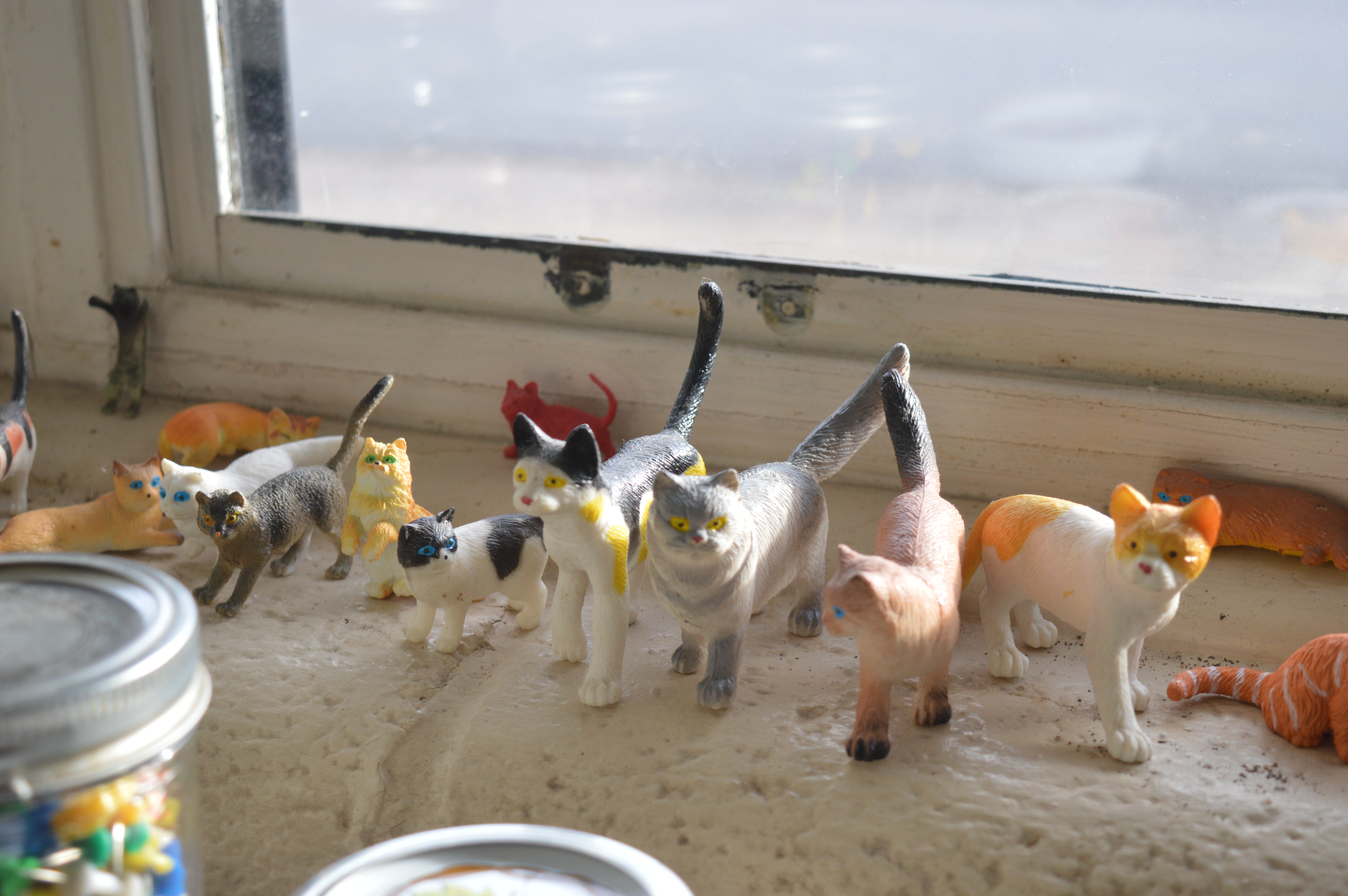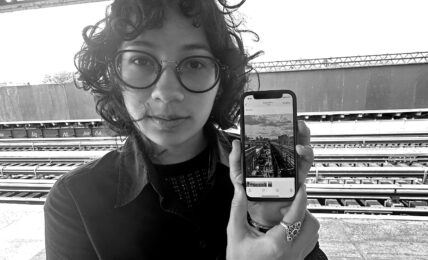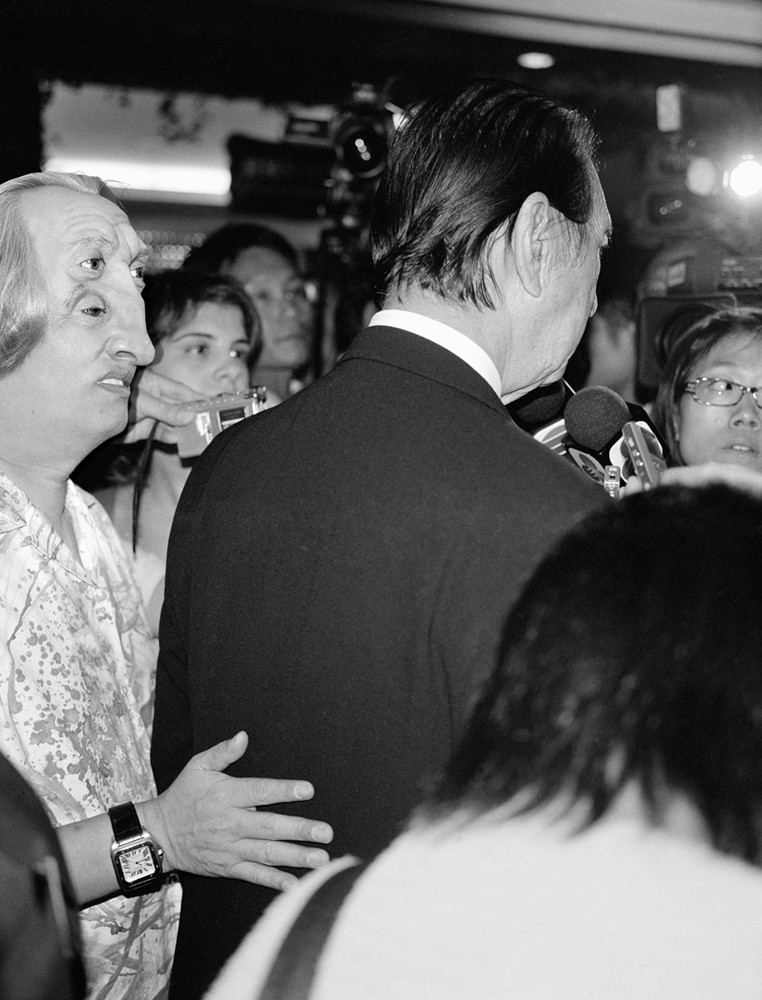Maria Chavez is an abstract turntablist and sound artist born in Lima, Peru. From live turntablism performances to sound sculpture installations, Chavez identifies “accidents, coincidence and failures” as the themes that unite her work. Digital America had the pleasure of interviewing Maria about her turntable practice, her history of DJing, her advice to future sound artists, and her University of Richmond exhibition, Topography of Sound: Peaks & Valleys Series, New Work by Maria Chavez.
:::
DigA: Can you talk about your roots in DJ culture and how that evolved into your interests in abstract turntablism? Was there a definitive “A-ha!” moment when you made that transition?
MC: It was all by chance; everything is by chance. That’s the driving force of all my work.
I’ve been a DJ since I was 16. I went to a rave for my 16th birthday and I remember waiting in a long line at a standstill. I watched these guys carting their records and walking right into the entrance and I thought, “I don’t belong in this line, I want to be able to walk in.” Once I got into the rave, I just sat on the sub woofer, watching the DJ and thinking, “I don’t belong on this side, I belong with them.”
Pretty much every boy in Houston really didn’t think girls could DJ. DJ culture has evolved so much since then. Now, if a man is caught talking shit about women they get shut down. Labels drop them, agencies drop them. It’s becoming this no tolerance culture, which is amazing to watch. Back then, this type of thinking was the norm. Everyone talked shit all the time, and I was told on a constant basis that girls just weren’t good DJ. But I was really determined.
From that point on, I started booking DJ spots at 17 years old. I almost failed out of high school because I was so invested in this culture.
Fast forward, I’m 20 years old, running a DJ company, employing my boyfriend at the time and two other guys. I would make a deal with clubs to give the guys one night a week or one night a month to play, normally called a weekly or monthly DJ residency. But it was difficult for me to get the DJ spots myself and it just got worse with time. During this time, I was getting really bored with DJing, always asking myself where else this all could go. I started to mess with the turntable, but every time I did, the guys would always say, “You’re not supposed to do that with this. That’s wrong.” One day I got super frustrated and decided one night that I was going to DJ the ends of the records, which is part of the record closest to the center that makes a that quiet rhythm to notify you that the record needs to be turned over. I told everyone that it was going to be a minimal techno set. I got away with it for about a half an hour—then suddenly the club manager caught wind of what was going on and freaked out and kicked me out of the club, saying, “You’re never going to DJ in Houston again.” And, up until two weeks ago, he was right. I hadn’t DJed in Houston since then. So it’s been 17 years. But at the time, it really traumatized me. I felt like I was being pushed out of the scene by the boys because I was trying to be creative.
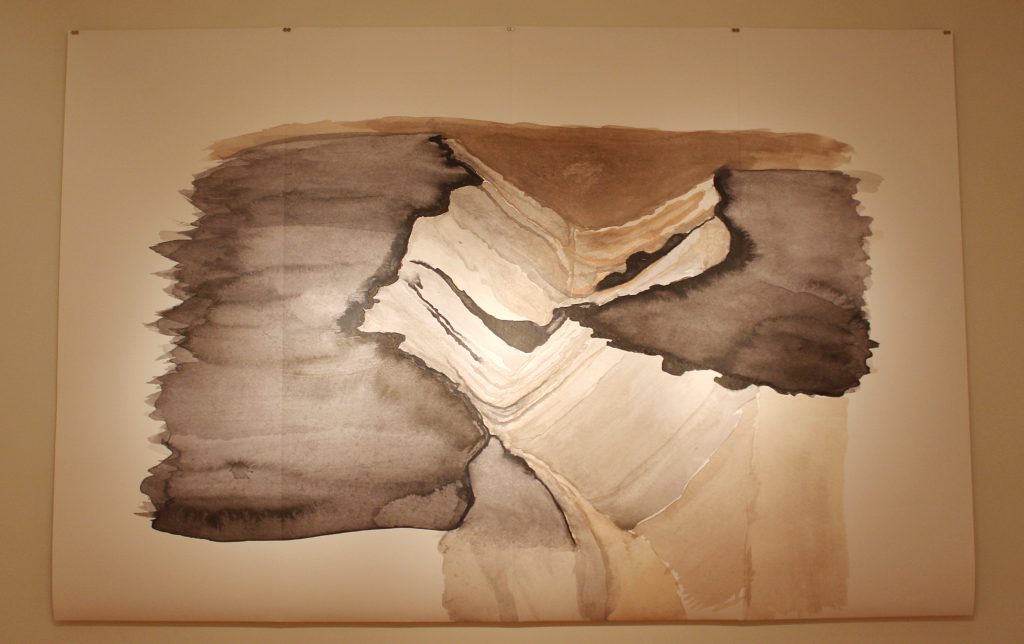
I had a radio DJ spot at 91.7 KTRU, Rice University Radio as a community DJ for MK Ultra, a Friday night electronic music show from 9:00 p.m. to 1:00 a.m. On Sundays, all day long, they would have the free jazz improvised sound or music show and they would play free jazz and improvised music. One Sunday, I heard that there was an organization hosting a free jazz show. It was Joe McPhee and Dominic Duval. I was like, “I’m going to go see a show and I’m going to see what this stuff is all about.” I thought I was late. I reached to open the door, and this man was standing right there, total serendipity. I said, “Oh! Am I late? I got stuck in traffic.” and he said “No, we were waiting for you!” He ended up becoming my first mentor, David Dove.
After the show, I was completely blown away. The show was just amazing, and I didn’t understand why it was amazing. I just loved it. I decided that I want to intern here from my audio engineering degree. So I went up to Dave and I asked him. He said, “Well, the only way that you can participate as an intern is if you take my improvisation classes that I teach at an after school program.” Well, I’m not a musician. I’m a DJ. “Well, bring a turntable, and let’s see what happens.”
At my first class, Dave and I tried to improvise as a duo. I ended up like watching myself doing all these things that all this time I was taught you weren’t allowed to do by the guys. You weren’t supposed to drag your needle across the record. But as I was performing, it all worked with his improvisations on his trombone. And as soon as it finished, I thought to myself, “This is it! I found it. I found what I’ve been looking for. This is it. This is what I was meant to do.”
And the DJ thing came back to me on it’s own, which was the most romantic thing in the world. So similar to the old saying, “If you love something let it go and if it comes back it was meant to be.
So, out of my struggle as a DJ came this one moment where Dave said, bring a turntable…I owe him everything. That’s what changed everything.
DigA: Did your work change when you got back into DJing again?
MC: Yes, I’m a lot more calm and my music collection is 3 times the size from when I was a kid. It’s been so fun to combine the old tracks I used to DJ with my new favorites. For the turntablism, it’s gotten a lot more detailed. Now I have a double-headed needle that was given to me by my friend King Britt. He gave it to me about two years ago and that’s completely changed my approach to the turntable. I was getting really bored before I got the double needle. Now, I’m falling in love with it again. There’s even more sonic possibilities and combinations. So that’s exciting to see how it evolves even further.
DigA: How does the double needle work?
MC: On the headshell there are 2 needles. One is placed below the head shell closer to the left and one on the right. So each stylus reads a groove on different parts the surface area of the record.
You can’t move the individual styli themselves. The head shell isn’t very large. But you can move the whole needle placement on the surface area of the record itself. The needle on the right can be channel one and the left can be channel two. So you can just choose one side to play out of the speakers or the other side. You can also have them both play 2 different parts of the record at the same time.
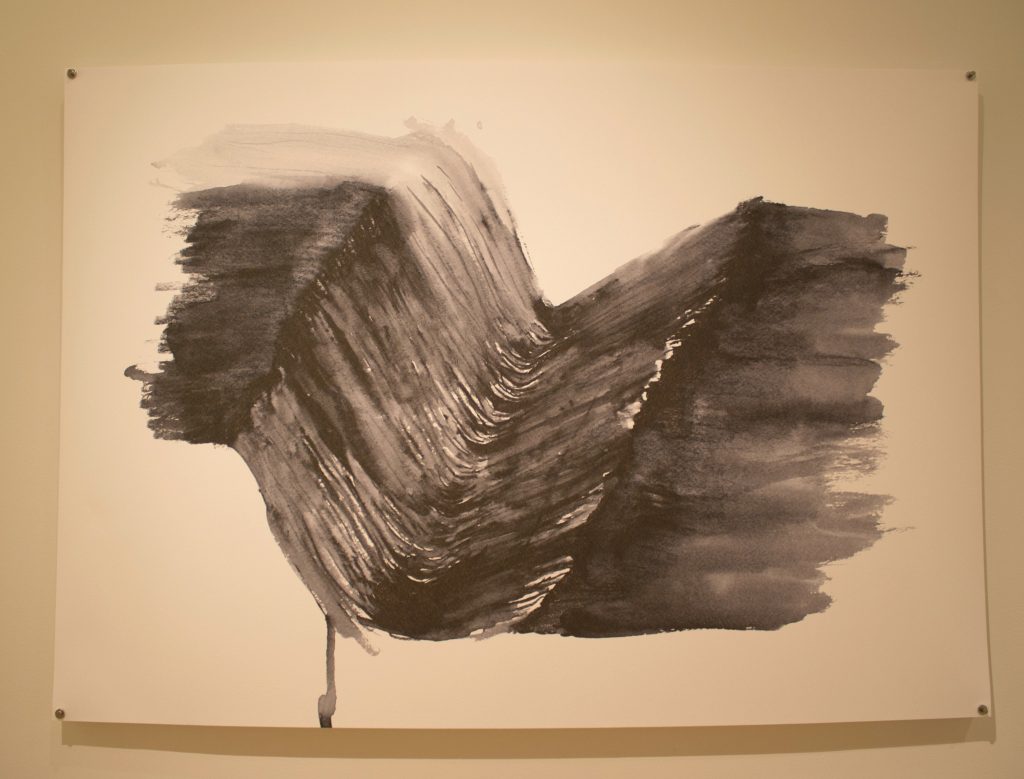
DigA: Can you talk a little bit about your exhibition at the University of Richmond Museums, Topography of Sound: Peaks & Valleys Series, New Work by Maria Chavez?
MC: It’s really a gesture, an attempt to clarify what I mean when I talk about the idea of a “silent sound installation.” It’s not exclusively a painting show, it’s a show dealing with materials that I’ve been focusing on for the past 17 years of my career and translating it into paintings. Since people know me as a sound artist they expect my work to be centered on the idea of emitted sound. The moment they realize that this exhibition is a painting show they normally say with a surprised look,” I didn’t know you could paint.” That’s the show, to me. Once their brain is flipped, they suddenly realize that a sound art exhibition can be a painting show. That’s the exhibition to me. The imagery that is on view at the museum focuses on microscopic stock images of vinyl records and needles/ styli with watercolor, sumi ink and graphite. The paintings are meant to resemble the topography of the earth so the “peaks’ are the tips of styli and the “valleys” represent the vinyl groove of a record. So the imagery of the exhibition is still sonic derived. Hence the silence in the gallery.
The contemporary art market is so quick to push everything into a corner to make sense for patrons. And because of that so many artists have been pushed to present sound installations that are centered on performance or sound coming from a speaker. This expectation is dangerous to the sound art canon. To just assume that sound art is only speaker configurations in a room or kinetic sculpture, etc. It’s so short sighted. It’s a really important phase right now. Things are starting to evolve in really interesting ways. To try to simplify it, curatorially, will only stunt things.
I feel like it’s also inclusive to the public because if someone walks into the space, and they have no idea about sound they can still walk into this show and look at these paintings and assume they are mountains and valleys.
It was also a retaliation to the ‘noise show merch table” culture. Normally, merch tables have t shirts and LP’s. And after so many people were asking me to make an album I decided to make an album in book form. Again, trying to reject the idea that an album has to be emitted sound by the performer. Instead, I’m getting individuals to perform the album their way, for themselves. I also love when I’m the only girl on the show bill and I put a book on the merch table. You should see their faces!
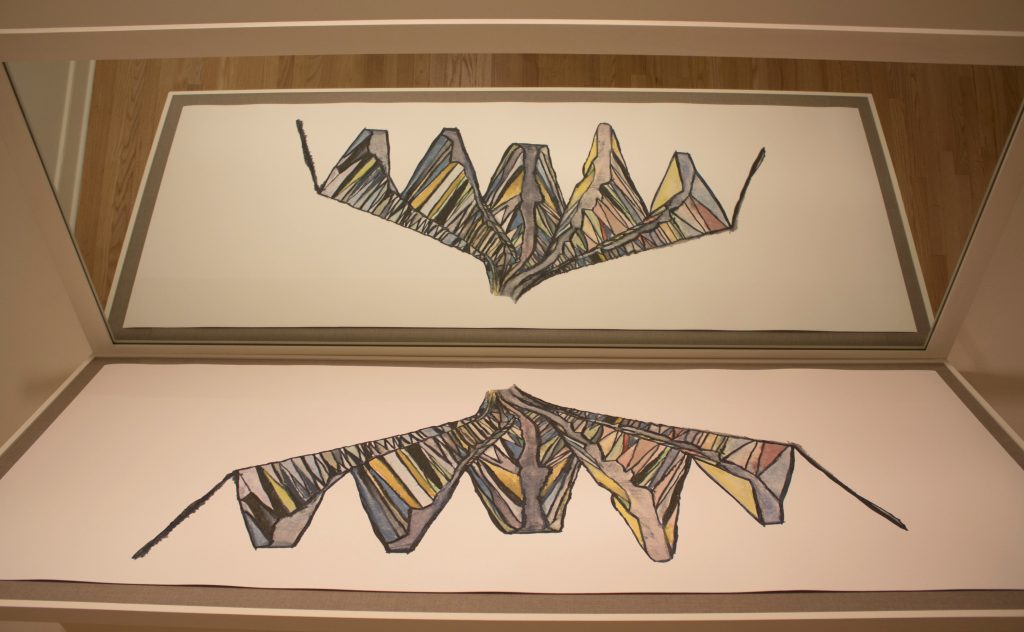
DigA: Do you consider teaching as part of your turntablism practice? How do you see workshops falling into the whole realm of your work?
MC: The workshops, to me, are really more of a way for me to sustain the practice. I know a lot of colleagues that are artists that have real jobs, and they have a major struggle with maintaining an output. So I feel really lucky that I can maintain my output. As far as the workshops themselves, they have taught me how to simplify and how to communicate the conceptualism of the work. It’s definitely helped me articulate my own practice and how it’s evolved a lot better.
DigA: What does the idea of “conceptual sound” mean to you?
MC: I guess the exhibition will be an example. It’s a conceptual presentation of sound without any sound being played. Conceptual of just being a really abstract idea of something sonic that is then being presented in a way that isn’t normally expected within the sound arts. I think conceptual sound art is still being confused with sound installation which is what this show is really trying to put on the table now.
DigA: How does it feel to continue to commit to the turntable, even though it’s technologically archaic?
MC: The turntable is archaic but it’s the only piece of technology that was invented in the 19th century that is still relevant in 21st century. You can’t say that about any other playback technology that’s been developed since then. It’s insane. I can understand why people think it’s archaic, but almost every club all over the world have turntables. It continues to redefine itself, that’s something that I find so unique to the turntable.
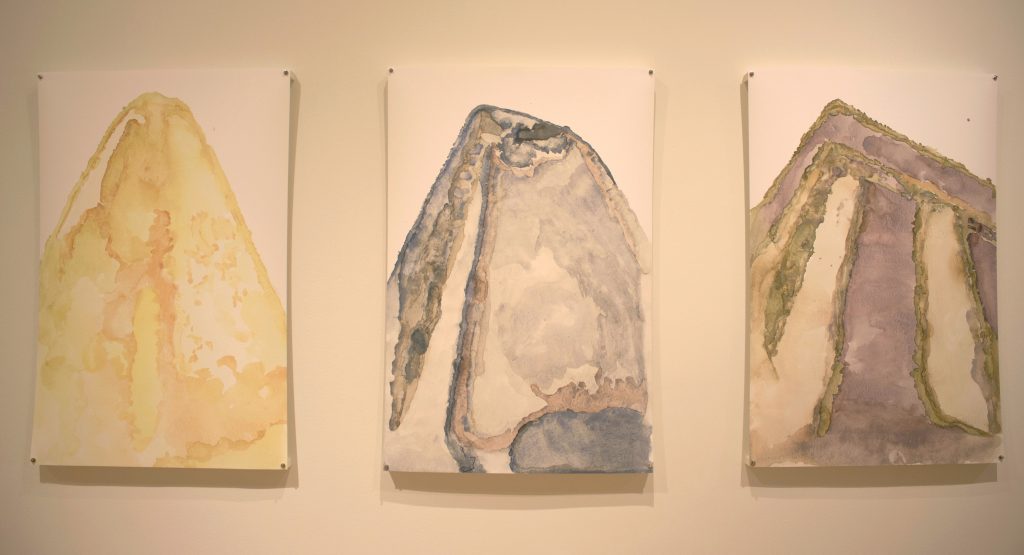
DigA: If you had to give advice to young sound artists, what would you say?
MC: Constantly make. Constantly have output. There’s something to a habit of just constantly making work. I have a relationship with output, ensuring myself that every single week I will perform, or I write for the next book, or I DJ, or I’m teaching, etc. It’s that step that needs to be done in order for me to see where the next step is. It’s about focusing on your relationship with chance and with manifesting. That’s the only way to grow in my opinion.
DigA: I don’t have a question. As a Latin artist, you are the first successful artist I have physically met in person. Yet alone, someone who is as unapologetic, cool, and fucking amazing as you. I just want to say thank you.
MC: I hate that I’m the first one that you met. Just the fact that I kept my name Maria Chavez is my political gesture to the art world because you see all of these European white male names in the museum and now you see mine. So now, a young Hispanic girl can look at a painting and read a name that looks like hers. That in itself is the statement. I can go on anywhere I want and so can you.

